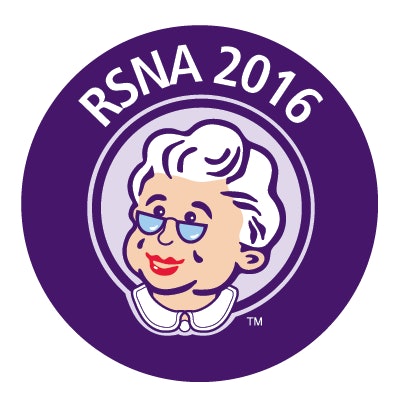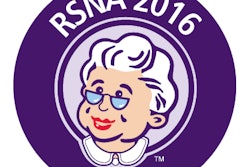
CHICAGO - Correlating radiology and pathology results directly within PACS software can save time and improve efficiency for radiologists who perform image-guided procedures, according to a presentation on Sunday at RSNA 2016.
Researchers from Penn State Milton S. Hershey Medical Center implemented a method that automatically triggers an email to a radiologist when a pathology report is finalized. They found that radiologists really appreciated not having to manually follow up on these cases.
"This is a nice way of making the radiologist's job more efficient," said presenter Dr. Jonelle Petscavage-Thomas.
Lack of integration
Modern healthcare enterprises are supported by multiple clinical information systems, but only pockets of the information systems are integrated. Radiologists benefit from seamless integration between the PACS, RIS, and vendor-neutral archive (VNA), while clinicians benefit from seamless access to laboratory information systems, pathology information system, and the electronic medical record (EMR), Petscavage-Thomas said
"To our knowledge, a direct integration between the PACS and the pathology reports has not been reported," she said.
This is a problem because radiologists regularly perform image-guided procedures for pathological diagnosis. However, the final pathological diagnosis may not be available for up to a week after a procedure, Petscavage-Thomas said.
As a result, radiologists must keep an electronic or pen-and-paper list of the cases they biopsy and remember to later check the final pathology result in the EMR.
"This is very inefficient," she said. "This list also needs to be put in a secure location to protect patient health information, and if you end up with a discordant pathology report you may want to relook at the images. So then you have to go back to the PACS, type up the patient, and relaunch the images. "
A better way
The researchers set out to implement a method of providing the final pathology report directly to the PACS queue of the radiologist who performed the procedure. They created a list of all RIS procedure exam codes to identify all possible cases where a pathology report would be generated. The group included any image-guided biopsies from the procedure suite, breast imaging suite, and outpatient ultrasound clinic. Other aspirations/drainage procedures were also included.
Next, the researchers provided this list to a third-party vendor (Primordial Design) who added an application-specific interface into their institution's PACS software. Under the workflow of the resulting software, the unsolicited result message being sent from the pathology information to the EMR was evaluated for a matching patient in the RIS based on three factors: the medical record number, the visit number, and a specimen received date within three days of the exam.
When a match for all three criteria was found, the radiologist received a "RadMail" in his or her inbox within the PACS software. This message included the entire text of the pathology report and the pathologist's name. It also restated the procedure that was performed. Radiologists could click on an icon to launch the imaging procedure if they wished, Petscavage-Thomas said.
Validation
The group performed initial validation of the system over a four-week period. After comparing a log of sent RadMail with a list of all radiology procedures that generated a pathology result during the time period, they evaluated the cases that did not generate a RadMail to determine why the system didn't work.
Subjectively, the radiologists loved the new system, she said.
"They no longer had to keep a running list; they just logged into the PACS, and there was a new message with their pathology report," she said. "It was integrated and was one mouse click."
They also appreciated the automated nature of the system, she said.
Of the 120 radiology studies that generated a pathology result over the initial four-week period, 88 (73.3%) generated a RadMail. After analyzing the cases that did not generate a RadMail, the team found that RIS database updates were a big factor.
"We were not proactively updating the new RIS examination codes," Petscavage-Thomas said. "Because of that, if the code was not updated, you would not receive a RadMail. We are now proactively updating those codes."
Another issue stemmed from the date range used by the software. If the system and date match between the pathology specimen date and the RIS examination date was outside of the three-day range, then it was missed. This problem was fixed by expanding the date range to seven days.
In addition, RadMails are automatically deleted after 30 days. So if the provider was out on leave or on extended vacation, the email disappeared from his or her inbox, Petscavage-Thomas said.
Reanalysis
After changes were made to the system, the researchers re-evaluated it for a second four-week period. Of the 155 radiology procedures that generated pathology results, 140 (90%) generated a RadMail.
Petscavage-Thomas and colleagues did find that some RadMails were sent to the wrong provider. Two radiologists in the group have the same name, and the system was just looking for the radiologist's last name.
"We are still working with the vendor to change this to more focus on full name or user ID, not just by last name," she said.
The group is interested in a number of enhancements to the system, including automatic update of new RIS exam codes to the third-party system, and a web page with a list of all pathology reports for the radiologist to have a log. Nonetheless, Petscavage-Thomas noted that their study was the first reported interfacing between radiology and pathology that appears seamless to the radiologist. It also saves time and provides enterprise integration.
"This could easily be replicated by other IT departments," she said.



















